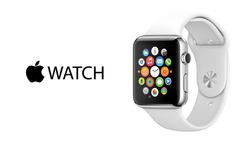
Devotees have their own mediums and methods for following Apple's latest technology conquering, from blogs to underground fanatic websites (I follow a few of them myself; some of these websites seem to be almost an extension of Apple's P.R. department). A favorite topic in recent years has been the discussion of potential product names for new Apple products. In 2007, there was a particularly spirited debate over whether Apple could use the trademark iPhone given Cisco's previous ownership of the mark "iPhone" for a cordless phone that could make calls over the internet. Apple eventually won that battle by making Cisco go quietly (well, sort of).
Well, as it turns out, Apple decided not to run the gauntlet of other companies that had already laid claim to the iWatch name. The decision not to use the iWatch name could have been influenced by a lot of things, but it probably wasn’t for the trouble that Apple would have gone through to secure the trademark (negotiations with other owners of the iWatch mark, paying significant sums to acquire the mark, etc.). After all, Apple went through the same trouble in 2007 with Cisco (no legal lightweight) when it sought the iPhone trademark. Anything Steve Jobs want, Steve Jobs got, don’t you know.
So if iWatch is out, surely “Watch” is the clear runner-up? It’s so simple and streamlined, both of which fit Apple to a t. Also, it seem highly marketable and doesn’t have the same techy overtones that may discourage consumers from purchasing the product for fear of not knowing how to work it. But alas the mere word “watch”, however elegant, doesn’t cut it as a trademark. Don’t you know that you can’t use a word that describes a function or feature of the underlying goods? That’s the sign of a descriptive mark, and a descriptive mark does not a strong trademark make.
Apple was forced to trudge along without the benefit of using a legacy mark (“iWatch”) or the more commercially intuitive (“Watch”). Watch as a name still apparently had great appeal to Apple (get it, “appeal”?), but the company had to settle on a way to use that name without casting it in such an obviously descriptive way. There is usually only one way to do this: tagging the company’s namesake or another long-used mark (what’s deemed in the trademark biz as a “house mark”) on some portion of the trademark. Fortunately for Apple, their main house brand APPLE has become a household name for consumer electronics such that a consumer seeing the mark attached to the front of another consumer item may have no trouble making the connection to the innovation behemoth.
That’s just what Apple did last fall in the U.S. and several other countries. Patently Apple, one of those aforementioned Apple fan blogs, provides a nice illustration of the two styles Apple claimed in its trademark applications:
Is this a tactic that only Apple could get away with? Well, no. Anybody could use a house brand to make a certain mark more distinctive. Whether simply using a house mark would distinguish the goods from another companies, however, is another story. The underlying house mark has to be pretty widely recognized in the marketplace to be protected. Apple’s decision in 2007 to drop the word “Computer” from its name made it that much easier to attach the APPLE mark to multiple goods and services, without consumers thinking that the underlying device was too “techy”. Indeed, Apple has been following this strategy for years, at least since the early 1980s when it released its word processing software under the name APPLEWORKS.
Apple may not always get what it wants but when it falls short of its own plans, it creates its own universe. It may be a little too early to tell, but I think APPLE WATCH will be just as effective at pointing back to Apple as iWATCH would be.



 RSS Feed
RSS Feed